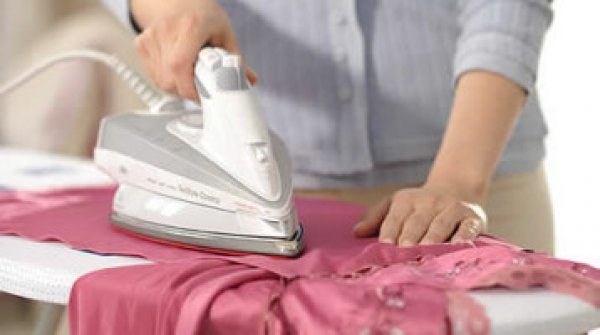You will need
- - iron with temperature control, steam supply;
- an Ironing Board;
- - gauze.
Instruction
1
Determine the type of fabric that you have to handle. Composition is usually indicated on the inner label. There is, at what temperature should be ironed thing. If you see the icon with crossed-out irons, keep in mind that this dress can not be ironed.
2
Lay the thing on the Ironing Board. Undo buttons and flatten the pockets, remove the belt from the belt loops. Turn the dress inside out – most of the fabrics to better handle that way.
Wool can be processed from the front side, but make sure you use the gauze, previously soaked in water and well wrung out. Difficult ironed natural linen. However, it does not require perfect ottagonale – linen dress can look a little rough around the edges, it emphasizes the naturalness of the fabric.
Wool can be processed from the front side, but make sure you use the gauze, previously soaked in water and well wrung out. Difficult ironed natural linen. However, it does not require perfect ottagonale – linen dress can look a little rough around the edges, it emphasizes the naturalness of the fabric.
3
Turn on the iron with the right temperature. For linen and cotton require maximum power (figure 3 on the scale of iron). Wool and viscose iron medium heat (2), and silk and polyester will require the most delicate treatment with a warm iron (on a scale indicated by a unit).
If your dress is made of composite materials, for example, has a lace trim or silk collar, made of different materials, have to use an iron set to a different temperature.
If your dress is made of composite materials, for example, has a lace trim or silk collar, made of different materials, have to use an iron set to a different temperature.
4
Start Ironing from the top of the dress. Treat the collar and shoulder area. Then iron the sleeves. It is not necessary to make them sharp folds. Lay the sleeve on the Board and iron it, without bringing the surface up to the middle part of the fold. After that, a little slip fabric and iron mid sleeves. Unbutton the cuff and spread out the whole width. Proutyuzhte her, trying not to crush the corners.
5
Treat the shelf dresses. If they have a clasp, gently go around the buttons with the iron. Do not press it to a hot surface – buttons or buttons can be deformed. Finish the top of the dress, propadu back.
6
Now for the skirt. Stroke it slowly, starting from the waist and ending at the hem. Last Tutuila ruffles and ruches. If they have a lace trim, walk – hot iron can burn the lace. After you finish the processing of the main leaf, turn the iron on a lower temperature and smooth finish.
7
When you have finished processing things, hang it on a hanger and leave it on for half an hour. Do not wear dress immediately after Ironing – it will immediately collapse. Cold stuff put away in the closet. Wool, silk and polyester dresses before it can be treated with antistatic for clothes.

